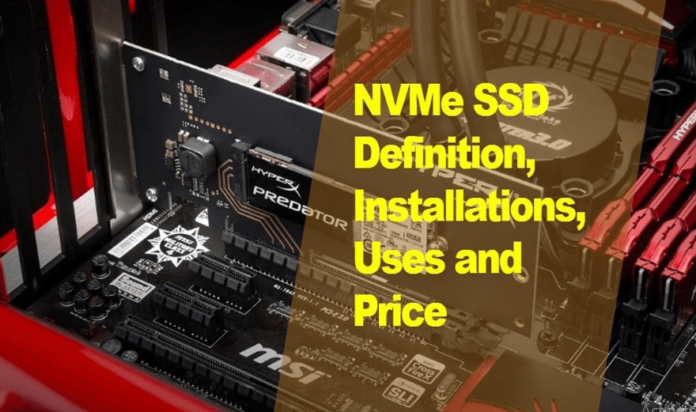Overview of NVMe SSD
You’ve heard about NVMe SSDs and may have heard that they’re in pretty high demand. But what is it? What is it used for? And why are prices going up everywhere? Let’s break down the definition of NVMe SSDs (which by the way refers to non-volatile memory access) and look at the various uses and prices available.
Non-volatile memory access (NVM) for short, is a hardwired interface for access to the non-volatile memory on a computer. It was designed specifically for enterprise applications and has lead to significant advances in speeds and technology. NVMe SSDs are made from very tiny interconnections between different components on the computer. Each connection is able to deliver small amounts of power when called upon by the CPU. In this way, NVMe SSDs times faster than standard SSDs because there are no moving parts that have to idle, and the SSD can access its innards at incredible speeds.
There are two different protocols that define how NVMe SSDs operates. The first, and most well known, is the SCSI protocol. The second, and less widely known, is the SATA protocol. Because there are so many benefits of the NVMe SSD over the traditional hard drives (which can fail and make your data inaccessible) and because storage devices have developed vastly over the years, both these protocols have developed a pretty solid following.
Of course, there is a lot more to NVMe SSDs than just speed. While they are great storage devices, they also serve as a virtualization bridge in a data center. Think of them as a bridge between a desktop computer and a high-traffic server operating system. The advantage of having multiple NVMe SSDs in a data center is that multiple computers will be able to run the same applications in a fraction of the time it would take each computer to access and use the slower hard drives.
NVMe SSDs have much faster speeds than traditional flash memory or SSDs. They are typically four to five times faster than SATA SSDs. This is because the NVMe SSD operates on a different bus type than the other two types of SSDs. While SATA and PATA SSDs function on a General Data Interruptions (GDI) signal, the NVMe SSD uses a separate NVMe interrupt request (NIC) protocol to communicate with the host.
Uses of NVMe SSDs
The other major advantage of NVMe SSDs has to do with the newer, more popular non-proprietary non-connector SD card formats. NVMe SSDs are very easily adapted for use in either the small form factor M.2 form factor or the ultra small form factor, the mini NVMe SSDs. These new storage devices enable today’s consumers to take their data storage needs with them no matter where they go. Many people who use their PC for work can take it to the office, but now they can take their work anywhere they go, and store it on the go.
An important advantage of the NVMe SSD compared to a traditional HDD is that the NVMe protocol can be adapted for use with any host device without any additional licensing. Because it operates on a different bus type than the other two types of SSDs, the NVMe SSD can take any PC architecture and interface to the world. Standard SATA and PATA controllers can’t adapting their protocols to the new NVMe interface, making the interface a non-contributory part of the drive.
NVMe SSDs offer great benefits to PCs and other storage devices, but they also have one distinct disadvantage – lower speeds than traditional SATA and PATA drives. NVMe drives are often five times slower than traditional hard drives at times, but the difference is usually only enough to make NVMe viable for some applications. Modern NVMe SSDs is being manufactured with higher capacity than the typical configuration, but even with these higher capacities there is no noticeable difference in overall performance between the low and high capacity configurations.

![What is a POC [Proof of Concept]? – Definition, Uses, Features and More What is a POC [Proof of Concept]? – Definition, Uses, Features and More](https://www.todaytechmedia.com/wp-content/uploads/2022/02/r-218x150.jpg)









